Brownsville, TX Pollen and Allergy Report for Summer 2023
Pollen Allergy Trends in Brownsville, TX
When is pollen lowest in Brownsville, TX?

February
Lowest month total PPM
Avg. PPM
When is pollen highest in Brownsville, TX?

March
Highest month total PPM
Avg. PPM
How does pollen in Brownsville, TX compare to Texas?
Brownsville has a higher average PPM than the state of Texas.
Brownsville yearly avg PPM:
Texas yearly avg PPM:
How does pollen in Brownsville, TX compare to the USA?
Brownsville has a higher average PPM than the USA.
Brownsville yearly avg PPM:
USA yearly avg PPM:
Is pollen worse this year in Brownsville, TX?
Spring 2023 was worse than spring 2022.
Spring 2023 PPM:
Spring 2022 PPM:
Average PPM in Brownsville, TX
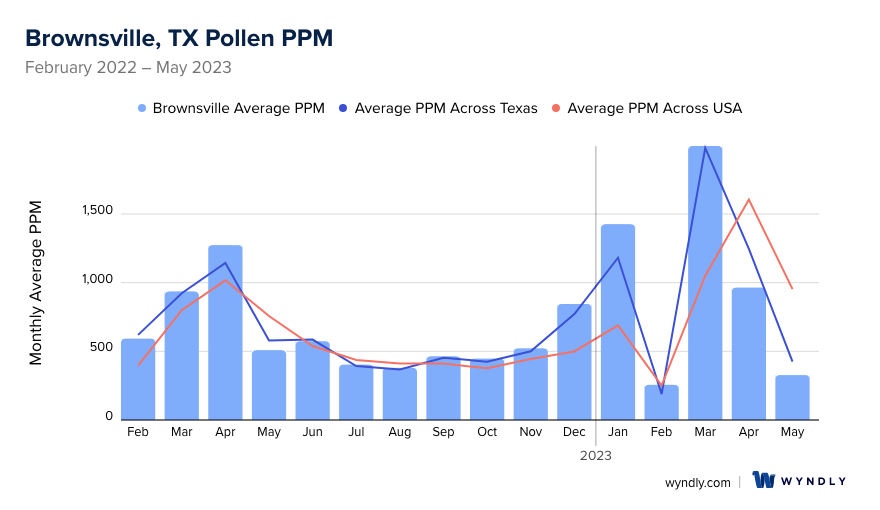
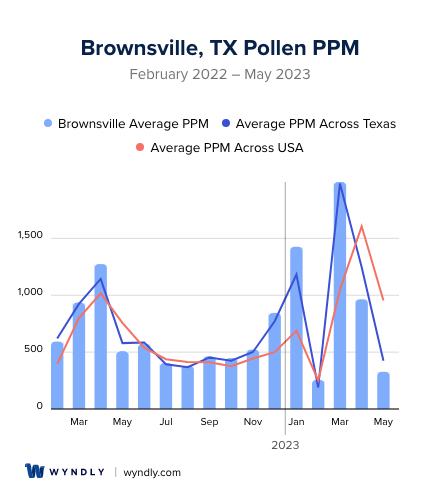
Brownsville, TX Pollen and Allergy Breakdown by Month
Grass
When is grass pollen highest in Brownsville, TX?
April has the highest grass pollen in Brownsville, TX with an average PPM of
When is grass pollen lowest in Brownsville, TX?
December has the lowest grass pollen in Brownsville, TX with an average PPM of
Tree
When is tree pollen highest in Brownsville, TX?
March has the highest tree pollen in Brownsville, TX with an average PPM of
When is tree pollen lowest in Brownsville, TX?
July has the lowest tree pollen in Brownsville, TX with an average PPM of
Weed
When is weed pollen highest in Brownsville, TX?
December has the highest weed pollen in Brownsville, TX with an average PPM of
When is weed pollen lowest in Brownsville, TX?
February has the lowest weed pollen in Brownsville, TX with an average PPM of
Brownsville, TX Pollen Monthly Breakdown by Pollen Type
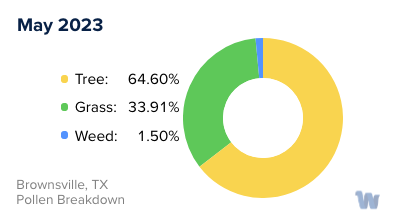
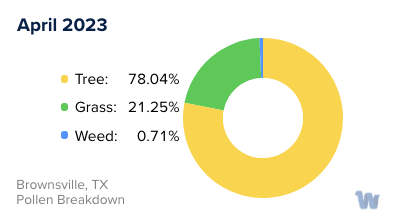
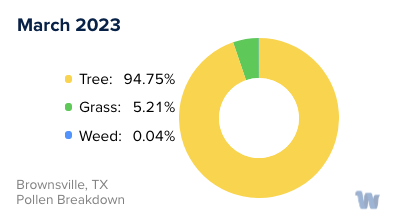
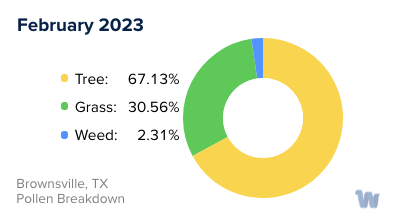
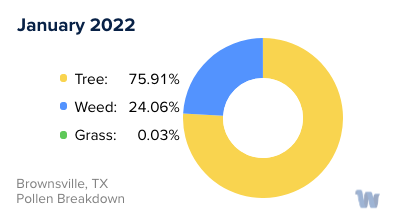
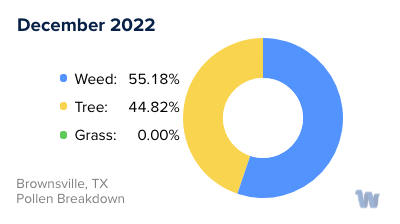
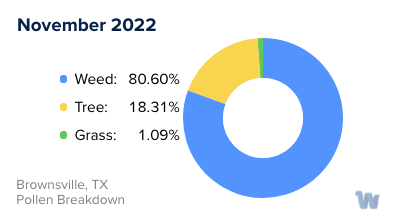
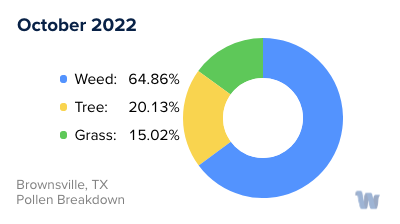
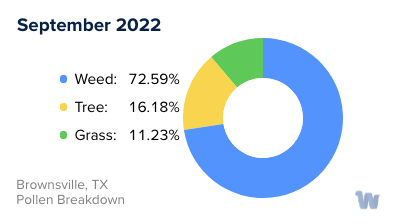
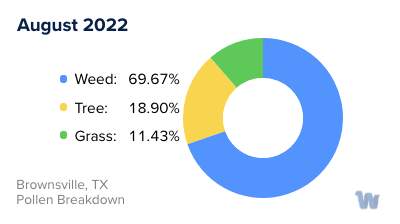
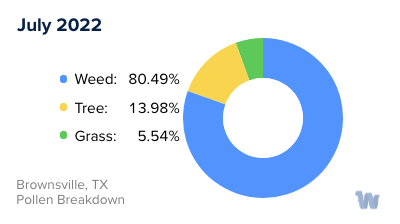
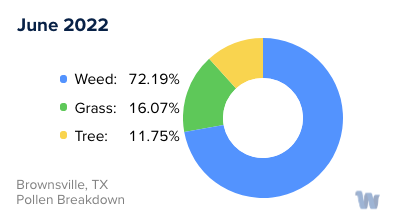
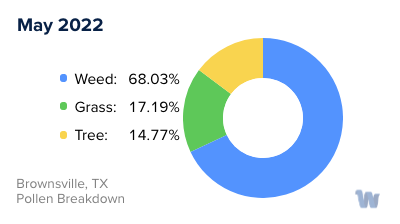
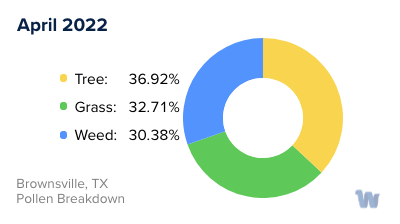
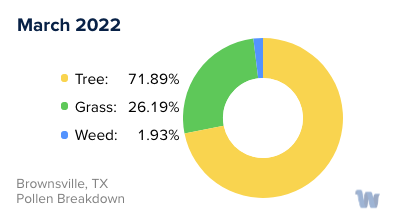
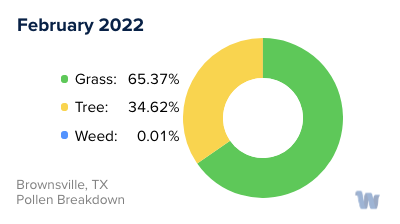
Pollen and Hay Fever in Brownsville, TX
Pollen allergies, often referred to as hay fever, are a common concern for residents of Brownsville, Texas. Allergenic pollens in this region primarily originate from trees, grasses, and ragweed. Each type of pollen has a different pattern of distribution across the seasons, which may influence the timing and severity of allergic symptoms experienced by individuals living in Brownsville.
Tree pollen, such as from oaks and pecans, can cause moderate allergic reactions. While the pollen count for trees can vary, there are periods when it reaches a moderate level. Grass pollen, on the other hand, can have a high concentration in the air. This type of pollen, which is produced by species such as Bermuda, Johnson, and Kentucky bluegrass, is a significant allergen and a common cause of hay fever symptoms. Last but not least, ragweed pollen, although usually present at moderate levels, can still cause considerable discomfort.
Texas has a unique allergy season calendar due to its climatic conditions. From November to February, mountain cedar is the main concern. As the winter season wraps up, from January to May, the allergenic spotlight shifts to the pollens of elm, ash, and mulberry trees. These trees produce pollen that can lead to symptoms like sneezing, wheezing, and even asthma-like symptoms.
As spring unfolds from March to May, oak and pecan tree pollen, as well as pollen from grasses, become prominent. The widespread presence of these grasses can make this a particularly challenging time of year for those sensitive to grass pollen.
The summer months, June and July, offer a brief respite, with a noticeable drop in pollen counts. However, as summer transitions into fall, from August to November, ragweed emerges as the primary allergen. Ragweed, a prolific pollen producer, is populous in the tropical and subtropical regions of the Americas, including South Texas.
Therefore, understanding the types of pollen present in the air and their seasonal trends can help residents of Brownsville prepare for and manage their pollen allergies more effectively.


